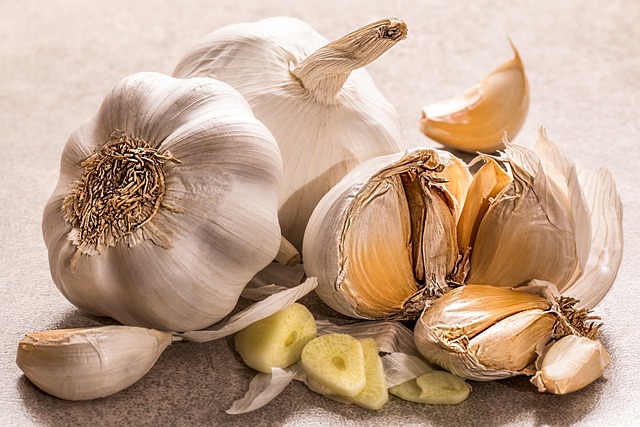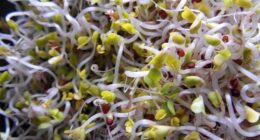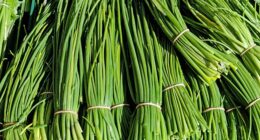Ramps are wild leeks with a mild onion-garlic flavor, while garlic is a cultivated bulb with a distinct pungent and savory taste.
TL;DR Ramps Vs. Garlic
While both ramps and garlic are popular additions to culinary dishes, they have distinct differences that set them apart. Ramps are wild leeks with a unique taste that is a combination of onion and garlic flavors, whereas garlic is a pungent bulb widely used for its strong flavor in various cuisines.
In terms of appearance and taste, ramps have broad leaves and slender bulbs with an earthy flavor. On the other hand, garlic has small cloves enclosed in papery skin with a sharp and potent taste.
What is garlic?
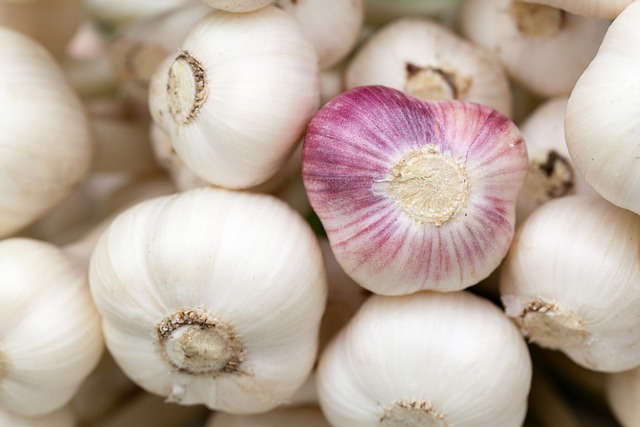
Garlic is a widely used culinary herb known for its pungent flavor and aromatic qualities. It is a bulbous plant belonging to the Allium family, closely related to onions, shallots, and leeks.
Garlic bulbs consist of multiple cloves, each encased in a papery skin. When crushed or chopped, garlic releases a strong, distinctive scent and a sharp, slightly spicy flavor. It is a versatile ingredient in various cuisines worldwide, valued for its ability to enhance the taste of savory dishes, sauces, soups, and marinades.
Garlic is also known for potential health benefits, including antioxidant properties and potential immune system support.
What are ramps?
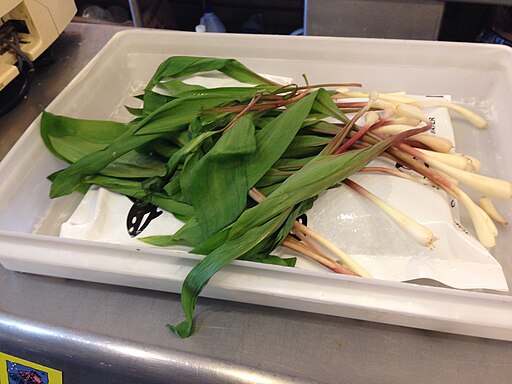
Ramps, scientifically known as Allium tricoccum, are wild, edible plants native to North America. They are often referred to as wild leeks and are known for their distinctive flavor, which is a blend of onion and garlic.
Ramps feature broad, green leaves and a small white bulb. They typically grow in wooded, shaded areas during the spring.
Ramps are highly sought after by foragers and chefs for their culinary uses. They can be used in a variety of dishes, including soups, salads, and sautés. Due to their popularity, sustainable harvesting practices are encouraged to protect natural populations.
Ramps Vs. Garlic – Key Differences
| Aspect | Ramps (Wild Leeks) | Garlic |
|---|---|---|
| Plant Type | Wild, leafy green plant with an edible bulb. | Cultivated bulbous plant. |
| Scientific Name | Allium tricoccum | Allium sativum |
| Flavor | Mild onion-garlic flavor, slightly spicy. | Strong, pungent, and distinctly garlicky taste. |
| Bulb | Small, slender white bulb with purple or red tinges. | Consists of multiple cloves enclosed in papery skins. |
| Leafy Greens | Edible green leaves, often used in cooking. | Typically, the leaves are not consumed. |
| Cultivation | Grows in the wild, often in shaded woodland areas. | Cultivated in gardens and farms worldwide. |
| Harvest Season | Spring, typically April to June. | Year-round availability, harvested as needed. |
| Culinary Use | Commonly used fresh in salads, soups, or as a sautéed side dish. | Widely used in cooking, flavoring various dishes. |
| Popularity | Highly sought by foragers and chefs for its unique flavor. | A staple in culinary traditions globally. |
| Storage | Fresh ramps have a short shelf life. | Garlic bulbs have a longer shelf life and can be stored for months. |
| Conservation | Sustainable harvesting encouraged to protect natural populations. | Not typically wild-harvested; readily available in markets. |
Ramps Vs. Garlic – Differences in appearance and taste
Differences in Appearance
Ramps (Wild Leeks)
- Ramps have broad, flat, green leaves that resemble lily of the valley leaves.
The edible part of ramps includes both the leaves and a small, slender white bulb, often with purple or red tinges. - Ramps grow close to the ground, and the leaves emerge directly from the bulb.
Garlic
- Garlic is characterized by its bulbous appearance, consisting of multiple cloves enclosed in papery, white or purple-tinged skins.
- Above ground, garlic plants have long, slender, green stalks known as scapes, which produce small bulbils.
Differences in Taste:
Ramps (Wild Leeks)
- Ramps have a unique flavor that combines the mildness of onions with the pungency of garlic.
- They offer a slightly spicy, but not overpowering, taste that is distinctively wild and earthy.
Garlic
- Garlic is renowned for its strong and pungent flavor, with a pronounced garlicky taste.
- It adds a robust and savory element to dishes and has a more assertive and concentrated garlic flavor compared to ramps.
Ramps Vs. Garlic – Nutritional differences
Ramps (Wild Leeks)
- Calories: Approximately 42 calories.
- Carbohydrates: Around 8.2 grams, including dietary fiber.
- Protein: About 1.5 grams.
- Fat: Minimal, typically less than 0.2 grams.
- Vitamins: Rich in vitamin A, vitamin C, and vitamin K.
- Minerals: Contains minerals like calcium, potassium, and iron.
- Other Nutrients: Provides some antioxidants and beneficial phytonutrients.
Garlic (Raw)
- Calories: Approximately 149 calories.
- Carbohydrates: About 33.1 grams, including dietary fiber.
- Protein: Approximately 6.4 grams.
- Fat: Minimal, typically less than 0.5 grams.
- Vitamins: Good source of vitamin C and vitamin B6.
- Minerals: Contains minerals like calcium, potassium, and manganese.
- Other Nutrients: Known for its allicin content, a compound with potential health benefits.
Ramps Vs. Garlic – Health benefits
Ramps (Wild Leeks)
- Rich in Antioxidants: Ramps contain various antioxidants, including vitamin C and phytonutrients, which help combat oxidative stress and inflammation.
- Vitamin K: They are a good source of vitamin K, which is essential for blood clotting and bone health.
- Dietary Fiber: Ramps contain dietary fiber, which aids in digestive health and may help regulate blood sugar levels.
- Low in Calories: Ramps are relatively low in calories, making them a nutritious addition to a balanced diet.
Garlic
- Allicin: Garlic is renowned for its allicin content, a sulfur compound with potential health benefits. Allicin has antibacterial and antifungal properties.
- Cardiovascular Health: Garlic may help lower blood pressure and reduce cholesterol levels, which can contribute to heart health.
- Immune Support: Garlic is known for its potential immune-boosting properties, which may help the body fight infections.
- Anti-Inflammatory: Garlic may have anti-inflammatory effects that can benefit various health conditions.
- Cancer Prevention: Some studies suggest that garlic consumption may be associated with a reduced risk of certain cancers.
Image Credits
Featured Image By – Steve Buissinne from Pixabay
Image 1 By – PublicDomainPictures from Pixabay
Image 2 By – victorgrigas, CC BY-SA 3.0 , via Wikimedia Commons
